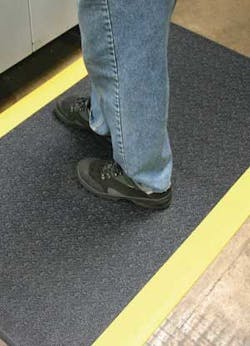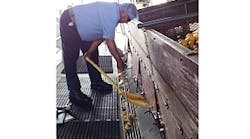When people imagine uncomfortable situations, light assembly probably isn't high on their list. Yet back pain, neck strains, tingling hands and other musculoskeletal complaints are common occupational hazards for warehousing professionals -- including (or perhaps especially) those who perform sub-assembly, sequencing or other table-assisted tasks.
According to the Bureau of Labor Statistics, ergonomic injuries now account for approximately 33 percent of all reported sick days and on-the-job injuries. Just as important, these injuries are twice as likely to occur in warehouses as they are in other private work settings, and injury data collected from dozens of facilities throughout the country suggest that work table activities are among the main contributors.
However, that doesn't mean that any DC operator should assume that aches and pains simply go with the value-added service territory, because there are many preventive measures that can help alleviate at least some of the risks.
With that in mind, here are just a few of the "good manners" your company should strongly consider bringing to the table.
Please Pass (Around) the Job Assignments
As many warehousing professionals who perform value-adding services can attest, carpal tunnel syndrome, tennis elbow and other repetitive motion injuries don't just happen to people who work at desks and keyboards.
While your company can't alter the fact that most light assembly tasks are by their very nature repetitive, a simple process change such as having workers routinely rotate tasks or change table positions throughout the day could help substantially reduce the constant strain placed on specific muscle groups. Job enlargement -- the act of having workers do two or more different tasks each time instead of just a single activity -- can yield similarly effective results, provided the bundled tasks differ in key areas, such as working postures and body parts used. And encouraging frequent recovery periods can help reduce the accumulated muscle fatigue that could lead to injury; even a few seconds of rest can make a tremendous difference.
Discourage Slouching
Although repetitive motion injuries frequently receive the lion's share of attention when ergonomic discussions are raised, it's often other musculoskeletal maladies that impact the highest number of workers. Approximately 80 percent of us are likely to experience back pain in our lives, and awkward postures such as those routinely adopted at many work tables are a key contributor.The good news is many kinds of adjustable height work tables, lifting machines, conveyors and vacuum assist devices are now available -- and well worth the investment if your company's budget permits. The less good news is these items are not inexpensive, which is why some DCs may not be able to immediately undertake their purchase.
Fortunately big-ticket investments aren't the only way to make positive strides in this area. For example, by purchasing hand tools in a variety of sizes, your company can better address the hand size differential between workers, because a good fit for one could be an excessive strain for another. In addition, by opting for tools that have padded handles, you'll help workers improve their grip and reduce pressure points. And by supplying well-insulated hand gloves, you'll reduce workers' exposure to other ergonomic risk factors such as vibrations or low temperatures.
Modifying your facilities' existing equipment is also an option. Padding or extensions can be added to various tools' handles to make them more ergonomically sound. Or several inches of height can be added to static work tables simply by placing them on a platform or pallets (but do make sure you secure them properly).
Consider Using Placemats
There are many reasons that concrete is the flooring surface of choice in most distribution centers. Facilitating employees' comfort isn't one of them. If the professionals who work at your sub-assembly tables are among the many who stand while doing their job, consider supplying anti-fatigue/ergonomic floor mats to help absorb some of the strain placed on many parts of their body (that could lead to things like back pain) while they're on their feet.Involve Everyone in the Conversation
As is the case with any area of safety, it is erroneous to think that your company bears 100 percent of the responsibility for keeping its minor assembly workforce injury-free. Ultimately a great deal of safety comes down to individuals consistently choosing to engage in safe practices and doing the right thing, which is why one of the best things your company can do to promote better work table safety is provide the people who work at these tables with thorough ergonomic awareness training.
Among other things, this training should demonstrate proper postures and lifting techniques and explain the role certain kinds of processes and equipment play in making sure workers' jobs don't literally become a pain.
Many such training courses are available for a nominal fee (in fact, your company's workers' compensation insurance company may already have developed one or be willing to do so for you). If properly taught and followed up on, they will undoubtedly change your company's ergonomic injury rates -- and ultimately your workers' overall quality of life -- for the better.
On a related note, once workers have received this training, make it clear that like any other aspect of warehouse safety, compliance with ergonomic safety practices is non-negotiable. Then make good on that policy by immediately correcting (or even citing) any ergonomically risky behaviors you see at work tables -- because no credible organization should knowingly condone any unsafe move at work, no matter how small.
In the long run, your managers, supervisors and employees must understand that each time they turn a blind eye to at-risk ergonomic conditions and behaviors, they are statistically more likely to cause themselves some eventual pain or suffering. And that's not a comfortable situation for anyone.
Kyle Oslos is senior director of logistics for APL Logistics, which provides warehousing and other integrated supply chain management services.






